Researchers have shown how a phenomenon called superlubricity, long thought to be of purely academic interest, can enable microscopic devices to move at speeds of up to 90km/h, as fast as cars on a highway.
Jul 12th, 2013
Read more
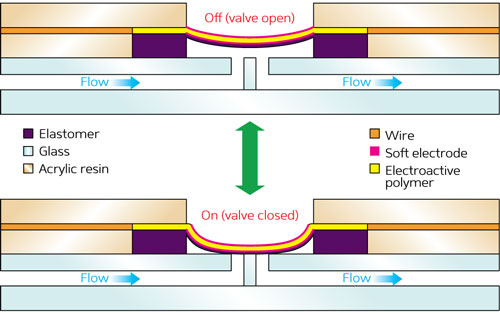 Electrically responsive polymers help make miniature systems for biomedical analysis even more compact.
Electrically responsive polymers help make miniature systems for biomedical analysis even more compact.
Jul 12th, 2013
Read more
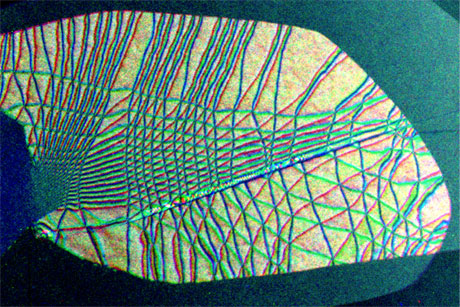 Combining experiment and theory, Cornell researchers have moved a step closer to making graphene a useful, controllable material. They showed that when grown in stacked layers, graphene produces some specific defects that influence its conductivity.
Combining experiment and theory, Cornell researchers have moved a step closer to making graphene a useful, controllable material. They showed that when grown in stacked layers, graphene produces some specific defects that influence its conductivity.
Jul 11th, 2013
Read more
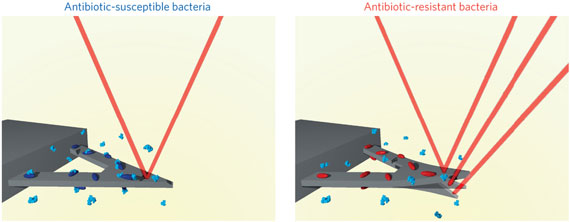 The response of bacteria to antibiotics can be quickly assessed by monitoring the fluctuations of cantilevers coated with the bacteria.
The response of bacteria to antibiotics can be quickly assessed by monitoring the fluctuations of cantilevers coated with the bacteria.
Jul 11th, 2013
Read more
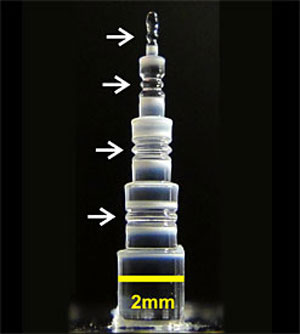 Laser frequency combs - high-precision tools for measuring different colors of light in an ever-growing range of applications - are not only getting smaller but also much easier to make. NIST physicists can now make the core of a miniature frequency comb in one minute. Conventional microfabrication techniques, by contrast, may require hours, days or even weeks.
Laser frequency combs - high-precision tools for measuring different colors of light in an ever-growing range of applications - are not only getting smaller but also much easier to make. NIST physicists can now make the core of a miniature frequency comb in one minute. Conventional microfabrication techniques, by contrast, may require hours, days or even weeks.
Jul 11th, 2013
Read more
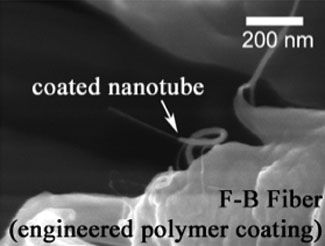 Researchers have devel�oped a type of fiber that is stronger than com�mer�cial Kevlar, Spectra, Dyneema prod�ucts and - even in its first generation - closely approaches the strength of Zylon.
Researchers have devel�oped a type of fiber that is stronger than com�mer�cial Kevlar, Spectra, Dyneema prod�ucts and - even in its first generation - closely approaches the strength of Zylon.
Jul 11th, 2013
Read more
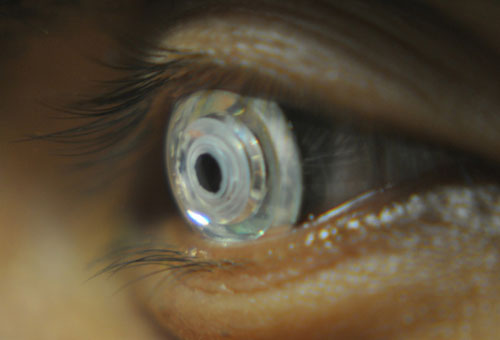 A team of engineers has designed a telescopic contact lens that can switch between normal and magnified vision by using slightly modified off-the-shelf 3D television glasses.
A team of engineers has designed a telescopic contact lens that can switch between normal and magnified vision by using slightly modified off-the-shelf 3D television glasses.
Jul 11th, 2013
Read more
Preparing semiconductor quantum dots is sometimes more of a black art than a science. That presents an obstacle to further progress in, for example, creating better solar cells or lighting devices, where quantum dots offer unique advantages that would be particularly useful if they could be used as basic building blocks for constructing larger nanoscale architectures.
Jul 10th, 2013
Read more
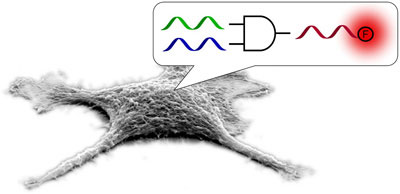 Chemists have performed a DNA-based logic-gate operation within a human cell. The research may pave the way to more complicated computations in live cells, as well as new methods of disease detection and treatment.
Chemists have performed a DNA-based logic-gate operation within a human cell. The research may pave the way to more complicated computations in live cells, as well as new methods of disease detection and treatment.
Jul 10th, 2013
Read more
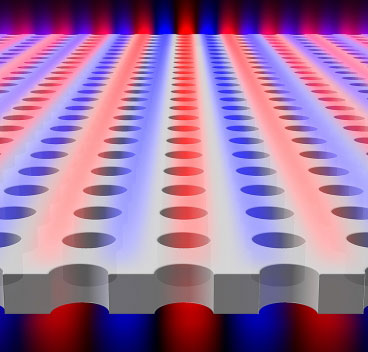 Researchers discover a new phenomenon that could lead to new types of lasers and sensors.
Researchers discover a new phenomenon that could lead to new types of lasers and sensors.
Jul 10th, 2013
Read more
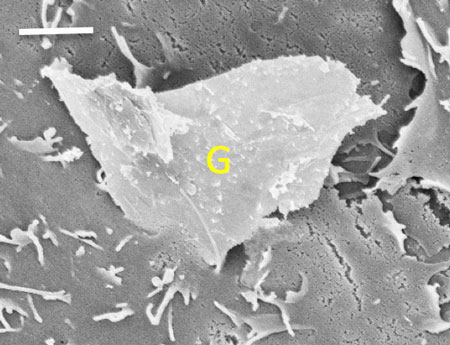 A collaboration of biologists, engineers, and material scientists has found that jagged edges of graphene can easily pierce cell membranes, allowing graphene to enter the cell and disrupt normal function. Understanding the mechanical forces of nanotoxicity should help engineers design safer materials at the nanoscale.
A collaboration of biologists, engineers, and material scientists has found that jagged edges of graphene can easily pierce cell membranes, allowing graphene to enter the cell and disrupt normal function. Understanding the mechanical forces of nanotoxicity should help engineers design safer materials at the nanoscale.
Jul 10th, 2013
Read more
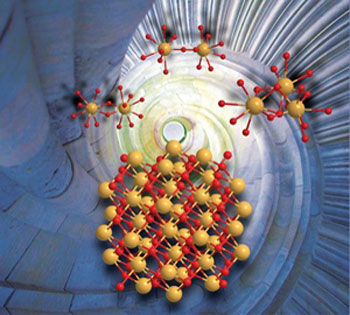 A simplified technique to fabricate nanocrystals of cerium dioxide, which have wide-ranging technological and industrial applications, has been 'unexpectedly' demonstrated by a UNSW chemist.
A simplified technique to fabricate nanocrystals of cerium dioxide, which have wide-ranging technological and industrial applications, has been 'unexpectedly' demonstrated by a UNSW chemist.
Jul 10th, 2013
Read more
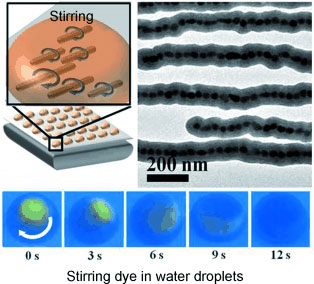 Anyone who has ever worked in a laboratory has seen them: magnetic stirrers that rotate magnetic stir bars in liquids to mix them. The stir bars come in many different forms - now including nanometer-sized. Researchers have now introduced chains made of 40 nm iron oxide particles that act as the world's smallest magnetic stir bars, effectively stirring picoliter-sized drops of emulsion with a commercial magnetic stirrer.
Anyone who has ever worked in a laboratory has seen them: magnetic stirrers that rotate magnetic stir bars in liquids to mix them. The stir bars come in many different forms - now including nanometer-sized. Researchers have now introduced chains made of 40 nm iron oxide particles that act as the world's smallest magnetic stir bars, effectively stirring picoliter-sized drops of emulsion with a commercial magnetic stirrer.
Jul 10th, 2013
Read more
This new technique will play a major role in the production of novel materials, from metals, alloys, metal matrix composites to micro- and nanostructured semiconductors.
Jul 10th, 2013
Read more
Researchers have developed a concept to potentially improve delivery of drugs for cancer treatment using nanoparticles that concentrate and expand in the presence of higher acidity found in tumor cells.
Jul 10th, 2013
Read more
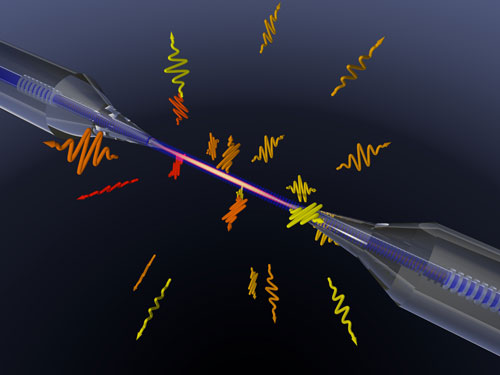 All the objects around us emit thermal radiation. Usually, this radiation can be described very accurately using Planck's law. If, however, the radiating object is smaller than the thermal wavelength, it behaves according to different rules and cannot emit the energy efficiently. This has now been confirmed by a team of researchers at the Vienna University of Technology.
All the objects around us emit thermal radiation. Usually, this radiation can be described very accurately using Planck's law. If, however, the radiating object is smaller than the thermal wavelength, it behaves according to different rules and cannot emit the energy efficiently. This has now been confirmed by a team of researchers at the Vienna University of Technology.
Jul 10th, 2013
Read more













 Subscribe to our Nanotechnology News feed
Subscribe to our Nanotechnology News feed